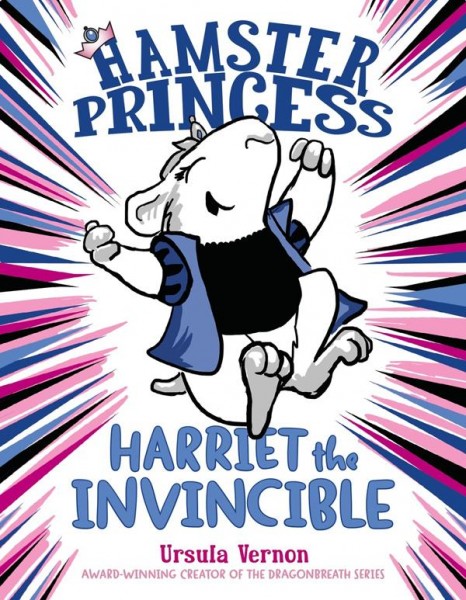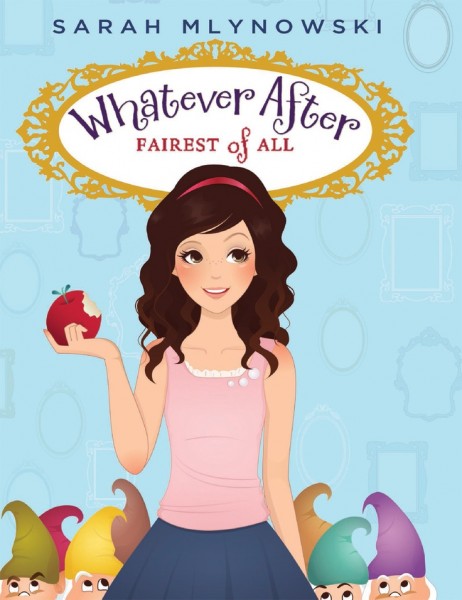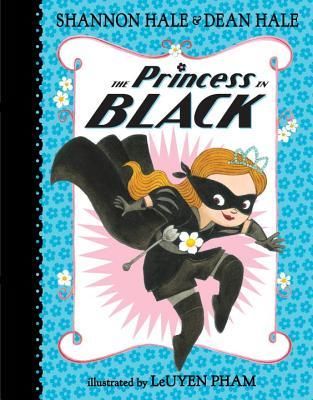2018 School Spending Survey Report
I Fancy Fairy Tales | Chapter Book Chat
Abby Johnson takes a look at several new transitional readers that play with traditional fairy tales elements and make for great lesson-extenders.
 10, she learns that a curse was placed on her at birth. When she turns 12, Harriet will prick her finger on a hamster wheel and fall into a deep sleep—remind you of a familiar story? Harriet is thrilled because she knows the curse’s strong magic will keep her alive until she turns 12, making her invincible. This is a really fun series starter for kids who like funny fantasy adventure stories. Plentiful cartoon illustrations also make this a great choice for kids who gravitate towards comics.
10, she learns that a curse was placed on her at birth. When she turns 12, Harriet will prick her finger on a hamster wheel and fall into a deep sleep—remind you of a familiar story? Harriet is thrilled because she knows the curse’s strong magic will keep her alive until she turns 12, making her invincible. This is a really fun series starter for kids who like funny fantasy adventure stories. Plentiful cartoon illustrations also make this a great choice for kids who gravitate towards comics. Activity or Lesson Plan Tie-In:
This reimagined fairy tale takes the fracturing a step further, casting the familiar characters as animals and changing story details. For example, Princess Harriet is cursed to prick her finger on a hamster wheel and she rides a quail instead of a horse. Ask students to reimagine other fairy tales with animal characters; how would that change their world and the details of their story? Although it’s not a straight graphic novel, the “Hamster Princess” series does incorporate a lot of comiclike illustrations. Share the book Fairy Tale Comics (First Second, 2013) and ask students to illustrate the same fairy tale in their own style of art. Put up a gallery to display the different interpretations imagined by students. Fairest of All by Sarah Mlynowski. (Whatever After: Bk 1). Scholastic. 2012. When Abby and her little brother Jonah discover a magic mirror in their basement, they are transported into a fairy tale world. But when they interrupt Snow White’s story, they mess everything up and it looks like Snow won’t get her happy ending. Can they figure out how to fix Snow’s fate before they run out of time? Further volumes in this light and funny series reimagine different stories as Abby and Jonah use the magic mirror to visit other classic tales.
transported into a fairy tale world. But when they interrupt Snow White’s story, they mess everything up and it looks like Snow won’t get her happy ending. Can they figure out how to fix Snow’s fate before they run out of time? Further volumes in this light and funny series reimagine different stories as Abby and Jonah use the magic mirror to visit other classic tales. Activity or Lesson Plan Tie-In:
Each of Abby and Jonah’s adventures are exercises in problem solving. Ask students to identify what went wrong to mess up the tale and then outline the steps that Abby and Jonah took to fix the fairy tale and get back home safely. This series incorporates a lot of different fairy tales, but there are certainly more fairy tales and folktales that could be included in future installments. Share other traditional literature and ask your students to imagine how those stories might get “broken” if Abby and Jonah popped in. What would happen if Abby and Jonah visited an Anansi tale? How about one of Aesop’s fables? Big Bad Detective Agency by Bruce Hale. Scholastic. 2015. There is trouble in Fairylandia and everyone suspects the Big Bad Wolf, of course. But Wolf didn’t do it and in order to prove his innocence he must team up with Little Pig to figure out who trashed the three little pigs’ house. This fractured fairy tale uses elements from many stories that will be familiar to kids, making it fun for kids to suss out which tales they recognize. It’s also a good choice for kids who like to read mystery stories.
do it and in order to prove his innocence he must team up with Little Pig to figure out who trashed the three little pigs’ house. This fractured fairy tale uses elements from many stories that will be familiar to kids, making it fun for kids to suss out which tales they recognize. It’s also a good choice for kids who like to read mystery stories. Activity or Lesson Plan Tie-In:
This is an ideal book for exploring characterization. What assumptions do we have about characters like the Big Bad Wolf or the three little pigs? How does this book challenge those assumptions? Scholastic has an activity guide to awarding-winning picture book, The True Story of the 3 Little Pigs by Jon Scieszka (Puffin) that explores some of these same concepts. http://www.scholastic.com/teachers/lesson-plan/true-story-3-little-pigs-extension-activities This is also a good book to introduce the mystery genre, as Wolf identifies suspects and collects evidence to support his case. Check out this mystery genre lesson plan on Read Write Think: http://www.readwritethink.org/classroom-resources/lesson-plans/what-mystery-exploring-identifying-865.html The Princess in Black by Shannon Hale. (The Princess in Black: Bk 1). Candlewick. 2014. Princess Magnolia appears to be your stereotypical princess: serving tea, wearing pink dresses, etc. But when the Monster Alarm goes off, she is off to defend her kingdom from the terrible creatures that cross over from Monsterland. While this is not based on any one traditional fairy tale, it smartly plays with the stereotype of the “damsel in distress”.
But when the Monster Alarm goes off, she is off to defend her kingdom from the terrible creatures that cross over from Monsterland. While this is not based on any one traditional fairy tale, it smartly plays with the stereotype of the “damsel in distress”. Activity or Lesson Plan Tie-In:
Pair the story about a strong heroine with real stories of strong women. Scholastic provides a guide to lesson plans for Women’s History Month that can be used during March or any time of the year: http://www.scholastic.com/teachers/collection/womens-history-month-collection-teaching-resources Candlewick provides additional resources on their website, including discussion questions and an activity kit with craft ideas and printables to continue the fun with Princess Magnolia at http://www.princessinblack.com/.RELATED
RECOMMENDED
CAREERS
The job outlook in 2030: Librarians will be in demand
CAREERS
The job outlook in 2030: Librarians will be in demand
ALREADY A SUBSCRIBER? LOG IN
We are currently offering this content for free. Sign up now to activate your personal profile, where you can save articles for future viewing






Add Comment :-
Be the first reader to comment.
Comment Policy:
Comment should not be empty !!!